《1 Introduction》
1 Introduction
The current trend in solar cell development is the fabrication of thinner and more flexible solar cells. The fabrication of thin film solar cells, compared with the fabrication of crystal silicon solar cells, requires fewer raw materials and less energy, and its production costs are also less. Additionally, thin film solar cells can be fabricated using metal foils or plastic substrates to create solar cells that are flexible. Flexible solar cells are lightweight, flexible, portable, and can be applied to a wide range of fields including satellites, airships, drones, equipment of individual soldiers, and other military and defense fields, as well as in building integrated photovoltaics, wearable smart devices, and other civilian fields [1].
At present, commercial thin film solar cells include thin film silicon solar cells, CdTe solar cells, and copper-indium-gallium-selenide (CIGS) solar cells. These three types of commercial thin film solar cells are fabricated on glass substrates. Furthermore, research on perovskite thin film solar cells has been gaining momentum; within nine years, their cell efficiency has improved from 3.8% [2] in 2009 to 22.7% in 2018, demonstrating significant potential for commercial development. To further improve commercial viability, the aforementioned four types of thin film solar cells can be fabricated using metal foils or plastic substrates. Therefore, this paper introduces the current development status and existing problems associated with these four types of flexible solar cells and offers several suggestions for their further development.
《2 Development status of flexible solar cells》
2 Development status of flexible solar cells
At present, flexible solar cells primarily include four types: silicon thin film solar cells, CIGS solar cells, CdTe solar cells, and perovskite solar cells. The materials that primarily can be used as flexible substrates are metal foils (stainless steel, molybdenum, titanium, aluminum, copper, etc.) and plastics (PI, PEN, PET, etc.). Among these flexible solar cells, two types, silicon thin film and CIGS solar cells, already have their own commercial cell modules.
《2.1 Flexible silicon thin film solar cells》
2.1 Flexible silicon thin film solar cells
Silicon thin film solar cells were the first researched and commercialized thin film solar cells. The band gap of the silicon thin film is adjustable within the range of 1.1 to 1.7 eV, and it can absorb sunlight of different wavelengths; therefore, silicon thin film solar cells can be fabricated into single-junction or multi-junction solar cells.
Silicon thin film solar cells can be fabricated using stainless steel or plastic substrates. The structure of their flexible substrate can be categorized into nip-structured or pin-structured configurations, according to the transparencies of the substrates used. The cell structures are shown in Fig. 1. The most efficient flexible silicon thin film solar cell was fabricated using stainless steel substrates by United Solar, USA, with a maximum efficiency of 16.3% [3] and an area of 0.25 cm2 . The most efficient flexible silicon thin film solar cell module was also manufactured by United Solar and exhibited an aperture efficiency of 8.2 % and a power of 144 W [4]. However, there is no silicon thin film solar cell module with plastic substrates.
《Fig. 1》
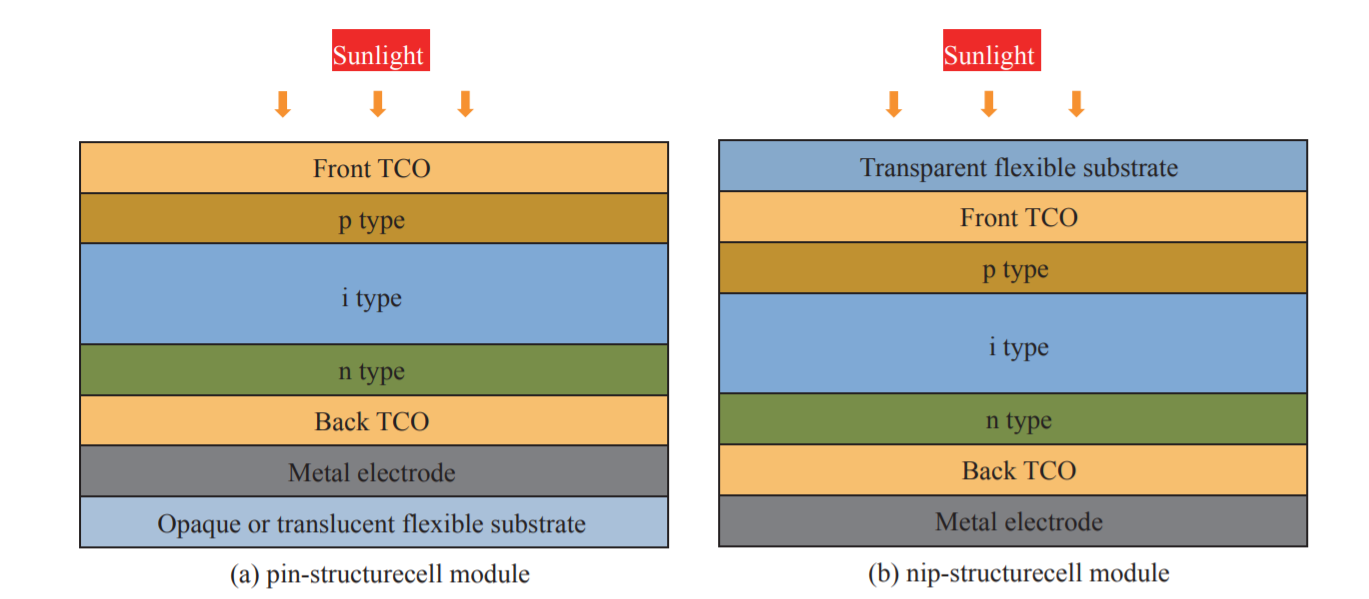
Fig. 1. Cell structure charts of flexible silicon thin film solar cells.
TCO: transparent conductive oxide.
2.1.1 Metal substrate-configured flexible silicon film solar cells
Flexible silicon film solar cells configured with a metal substrate can be obtained by depositing a silicon thin film solar cell on a stainless steel substrate. Because the stainless steel substrate is opaque, the cell structure is a nip structure. United Solar is the first company to conduct research on flexible silicon thin film solar cells with this type of stainless steel substrate configuration, and it is also the only company that has achieved the commercialization of this product. The company established a production line in 2002 and reported that its product has an aperture efficiency of 8.2 %. Subsequently, the company produced a-Si:H/a-SiGe:H/nc-Si:H, a triple-junction solar cell with an initial efficiency of 16.3 %, which is currently the most efficient flexible silicon thin film solar cell ever fabricated.
To further improve the stability of flexible silicon thin film solar cells and to reduce its production costs, Dr. Shengzhong (Frank) Liu, the former senior scientist at United Solar, and his colleagues, using the method of high speed deposition (>1 nm/s), fabricated an a-Si:H/nc-Si:H/nc-Si:H triple-junction solar cell with a stable efficiency of 12.41 % and an area of 1.05 cm2 . Further, the team optimized the cell fabrication process and produced large-area cell modules [5]. The stable efficiency of the 400 cm2 area module was 11.2 %, and the initial efficiency of the 807.8 cm2 module was 11.8 %. Photographs of the cells are shown in Fig. 2.
《Fig. 2》

Fig. 2. Photographs of large-area flexible silicon thin film solar cell modules.
Regrettably, United Solar closed in 2012 owing to poor management. However, Dr. Shengzhong (Frank) Liu’s team at the Dalian Institute of Chemical Physics, Chinese Academy of Sciences, fabricated an a-Si:H/nc-Si:H double-junction cell module on a 30-μm thick stainless steel substrate with an efficiency of 11 % [6] and an area of 200 cm2 . Currently, this is the best flexible silicon film solar cell module with a stainless steel substrate configuration in China.
2.1.2 Plastic substrate-configured flexible silicon film solar cells
The types of plastics that can be used as flexible substrates are polyimide (PI), polyethylene terephthalate (PET), and polyethylene naphthalate (PEN). Among these three materials, PI has the highest glass transition temperature (450 ℃), whereas PET has the lowest glass transition temperature (80 ℃). Moreover, PET has the best transmittance and the lowest cost. Therefore, the silicon thin film solar cells fabricated using both PI and PET are nip-structured, and the silicon thin film solar cells fabricated using only PET can be nip-structured or pin-structured.
2.1.2.1 nip-structured flexible silicon film solar cells
Haug et al. [7] fabricated small area amorphous silicon solar cells that are nip-structured and single junction, single junction nanocrystalline silicon solar cells, and double junction solar cells using PET and PEN of 50 μm thick. Their efficiencies were, respectively, 8.1 %, 8.7 %, and 10.9 %. T. Sodeestorm et al. [8] developed a nip-structured amorphous silicon single junction cell with an efficiency of 8.8 % on a PET substrate. E. Marin et al. [9] fabricated a microcrystalline silicon single junction cell with an efficiency of 7.5 % on a 125-μm thick PI substrate. Y. Liu et al. [10], with substrate transfer technology, produced amorphous silicon single junction cells. The efficiency of their fabricated nip-structured amorphous cell was 7.69 %, and the efficiency of their mini-module was 6.7 %. Hongbo Li et al. [11] also produced flexible double junction solar cells with substrate transfer technology. The efficiency of the small-area cell was 7.8 %, and the area was 0.16 cm2 . The efficiency of the mini-module was 7.4 %, and the area was 25 cm2 .
2.1.2.2 pin-structured flexible silicon film solar cells
S. Fernández et al. [12] produced a pin-structured single junction amorphous solar cell on a 250-μm thick PET substrate. Research indicates that when an aluminum-doped zinc oxide (AZO) film was fabricated with a lower deposition power, the open circuit voltage and filter factor of the solar cell were larger, and the efficiency of the obtained solar cell was 5.14%.
《2.2 Flexible CIGS solar cells》
2.2 Flexible CIGS solar cells
CIGS is a direct band gap material. The absorption coefficient of visible light is up to 105 cm–1. By adjusting the ratio of In and Ga in the film, the width of the band gap can be continuously adjusted within the range of 1.04 to 1.67 eV.
Flexible CIGS solar cells can be fabricated by depositing CIGS solar cells on metal or plastic substrates. The structure of a flexible CIGS solar cell is shown in Fig. 3. The most efficient metal substrate configuration for a flexible CIGS solar cell was fabricated on a PI substrate by the Swiss Federal Laboratories for Materials Science and Technology (EMPA), and its reported efficiency was 20.4 %. The most efficient module was fabricated by Miasole on a stainless steel substrate; its aperture efficiency was 16.7 %, its area was 2 585 mm × 1 293 mm, its power was 510 W, and its weight was 6.6 kg. Currently, no plastic substrate configuration exists for a flexible CIGS solar cell module.
《Fig. 3》
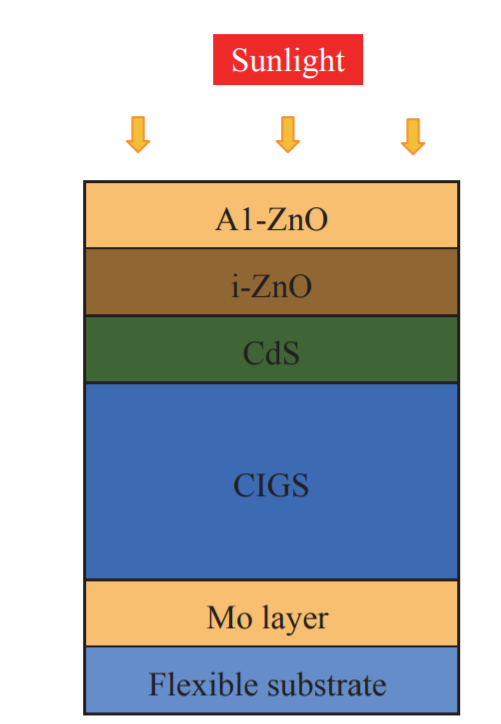
Fig. 3. Structure chart of flexible CIGS solar cell.
2.2.1 Metal substrate-configured flexible CIGS solar cells
Metals such as stainless steel, molybdenum, titanium, aluminum, and copper can be used as substrates for flexible CIGS solar cells. As early as 1992, International Solar Electric Technology, Inc. (ISET) in the United States used Mo as the substrate and fabricated a cell with an efficiency of 8.3 % [13]. In 2010, the National Institute of Advanced Industrial Science and Technology in Japan produced a cell with an efficiency of 14.6 % [14] on the Mo metal substrate. In 2000, the Center for Solar Energy and Hydrogen Research Baden-Württemberg fabricated a cell with an efficiency of 12 % [15] on a Ti substrate. In 2009, Aoyama Gakuin University in Japan fabricated a cell with an efficiency of 17.9 % [16] on a Ti substrate. Institute for Solar Technology in Germany fabricated a cell with efficiency less than 10 % [17] on a Cu substrate. In 1999, the National Renewable Energy Laboratory fabricated a cell with an efficiency of 17.4 % [18] on a stainless steel substrate. In 2012, EMPA fabricated a CIGS cell with an efficiency of 17.7 % [19] on a Ti-plated stainless steel substrate. The cell with the highest efficiency was fabricated by NanoSolar and EMPA on an Al substrate, and its efficiency was 17.1 %. In terms of modules, the most efficient flexible CIGS solar module is the previously mentioned one manufactured by Miasole on a stainless steel substrate with an aperture efficiency of 16.7 % and area of 2 585 mm × 1 293 mm.
2.2.2 Plastic substrate-configured flexible CIGS solar cells
Currently, only PI substrates can be used as plastic substrates for flexible CIGS solar cells. In 1996, ISET produced a cell with efficiency of 8.7 % [20] on a PI substrate. The efficiency of the cell that EMPA fabricated on a PI substrate in 1999 was 12.8 %, but by 2011, the efficiency of a cell fabricated by EMPA had increased to 18.7 % [21]. Moreover, EMPA integrated eight subcells and fabricated a PI substrate widget with an efficiency of 14.8 %, which is shown in Fig. 4. In 2013, EMPA increased the efficiency of the PI substrate configured flexible CIGS cell to 20.4 %.
《Fig. 4》
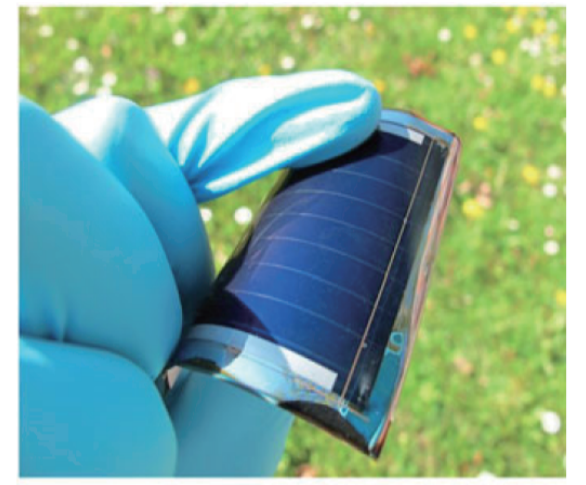
Fig. 4. Mini-module: a flexible CIGS solar cell with a 14.8% efficiency on a PI substrate.
《2.3 Flexible CdTe solar cells》
2.3 Flexible CdTe solar cells
CdTe is a direct band gap material that possesses an optical band gap of 1.45 eV and a high optical absorption coefficient [22]. A 2-μm thick CdTe cell can absorb 100 % of sunlight [23]. Moreover, when exposed to proton and electron irradiation, its properties are exceptionally stable.
Flexible CdTe solar cells can be fabricated using either metal or plastic substrates. The most efficient metal substrate configuration was fabricated by EMPA using a metal (molybdenum) substrate. Its efficiency is 11.5 %. The most efficient plastic substrate configuration is the one fabricated by EMPA using PI substrate, and its efficiency is 13.8 %. However, both solar cells are small-area cells. Currently, no flexible CdTe solar cell module exists.
2.3.1 Metal substrate-configured flexible CdTe solar cells
The structure of the metal substrate configuration of a flexible CdTe solar cell is shown in Fig. 5. The efficiency of this type of solar cell is generally low, approximately 3.5 % to 8 %, although in 2013, EMPA obtained an 11.5 % efficiency by adjusting the Cu content in a CdTe cell on a molybdenum substrate.
《Fig. 5》
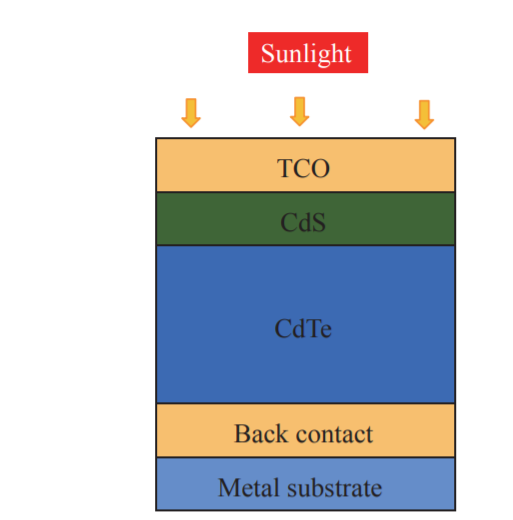
Fig. 5. Structure chart of flexible CdTe solar cells on metal substrate.
2.3.2 Plastic substrate-configured flexible CdTe solar cells
Based on light transmittance, plastic substrates for flexible CdTe solar cells can be categorized into two types: upper substrate configuration and lower substrate configuration. These structures are shown in Fig. 6. However, in the former, it is only through plastic substrate that light can enter the solar cells; therefore, the light transmittance of the plastic substrate is also a factor to consider.
《Fig. 6》

Fig. 6. Structure chart of flexible CdTe solar cells on plastic substrate.
2.3.2.1 Plastic substrate-configured flexible CdTe solar cells (upper substrate structure)
EMPA fabricated flexible CdTe solar cells of the upper substrate structure type on a 10-μm thick polyimide film (UpilexTM). The fabrication structure is shown in Fig. 7. The efficiency of the flexible CdTe solar cells produced through this method was 11.38 %. Compared with that of a glass substrate configuration, the transmittance of the polyimide film is low. Therefore, development of a method to further improve the transmittance of the polyimide film is the focus of further research of upper substrate structure solar cells.
《Fig. 7》
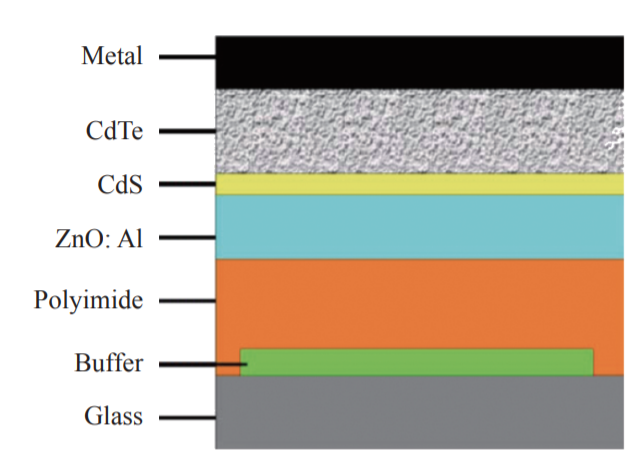
Fig. 7. Fabrication structure chart of upper substrate structure flexible CdTe solar cells.
2.3.2.2 Plastic substrate-configured flexible CdTe solar cells (lower substrate structure)
One advantage of the lower substrate structure solar cells, compared with the upper substrate structure, is that the transparency of the polyimide film has no effect on the performance of the solar cell. EMPA, using the commercial polyimide film (UpilexTM), has developed flexible CdTe solar cells of the lower substrate structure. Its fabrication process is shown in Fig 8. Through this method, flexible CdTe solar cells with efficiencies of 7.3 % and 6 % (with TCOs of FTO and AZO, respectively) were obtained. Therefore, optimizing the fabrication process of the solar cells can result in the development of more efficient solar cells.
《Fig. 8》

Fig. 8. Fabrication process of lower structure flexible CdTe solar cells.
《 2.4 Flexible perovskite solar cells》
2.4 Flexible perovskite solar cells
Perovskite solar cells are currently a focus of solar cell research. Since the first perovskite solar cell was developed in 2009, the efficiency of the perovskite solar cells has increased from 3.8 % to 22.7 % within only nine years. Moreover, owing to its simple fabrication process and its low cost of raw materials, perovskite solar cells demonstrate significant commercial potential, and it is possible that they can replace crystalline silicon solar cells.
Perovskite cells can be fabricated using plastic or metal substrates to obtain flexible perovskite cells. Flexible perovskite solar cells can be classified as nip-structured and pin-structured according to the different substrates applied [24]. These structures are shown in Fig. 9. Currently, the most efficient flexible perovskite solar cells were fabricated by Dr. Shengzhong (Frank) Liu’s team at Shaanxi Normal University in conjunction with the Dalian Institute of Chemical Physics of the Chinese Academy of Sciences. Fabricated on PET substrates, the fabricated solar cells have an efficiency of 18.4% [25].
《Fig. 9》

Fig. 9. Structures of flexible perovskite solar cells. HTL: hole transport layer; ETL: electron transport layer
2.4.1 Plastic substrate-configured flexible perovskite solar cells
Flexible perovskite solar cells of both nip and pin structures can be obtained. Plastic substrates, such as PET, PEN, or other polyimides, are not capable of withstanding high temperatures. Therefore, to fabricate flexible perovskite solar cells on plastic substrates, the primary consideration is to prepare a TiO2 film and other electron transport layers at low temperatures.
2.4.1.1 nip-structured plastic substrate-configured flexible perovskite solar cells
Giacomo et al. [26] prepared a TiO2 filmat a low temperature, 150 °C, on PET/ indium tin oxid (ITO) and developed solar cells of 8.4 % efficiency with an area of 0.12 cm2 . Kim et al. [27] prepared a compact TiOx layer on PEN/ITO and obtained 12.2 % efficiency solar cells. In 2015, Yang et al. [28] produced a high-quality TiO2 electron transport layer of satisfactory transparency and suitable energy level at room temperature on the flexible PET substrate. Together with the self-developed alternating vacuum deposition method (layer-by-layer), flexible perovskite cells with an efficiency of 15.07 % were fabricated. This efficiency was exceptional. A photograph of the cell is shown in Fig. 10. Thereafter, the team developed flexible solar cells of 16.09 % efficiency [29] by modifying the interface of the TiO2 film. In 2017, Wang et al. [30], using tin oxide as electron transport layer, improved the efficiency of the flexible perovskite solar cells to 18.3 %. In the same year, Shengzhong (Frank) Liu’s team fabricated flexible perovskite solar cells with 18.4 % reported efficiency and a small area of 0.052 cm2 by making two changes: using niobium pentoxide electron beam evaporation as the electron transport layer in the flexible perovskite solar cells and modifying the absorbing layer of perovskite. The efficiency of these flexible solar cells increased to 13.35 % owing to a large area (1.2 cm2 ). It is the highest efficiency exhibited by perovskite solar cells thus far [25].
《Fig. 10》

Fig. 10. Flexible perovskite solar cell with an efficiency of 15.07%.
2.4.1.2 pin-structured plastic substrate-configured flexible perovskite solar cells
The flexible perovskite cells can be fabricated using PET and PEN plastic substrates to manufacture the pin-structured flexible perovskite cells. Its basic structure is the flexible substrate/electrode/PEDOT: PSS/perovskite/PCBM/electrode. Roldánacarmona et al. [31] fabricated solar cells with 7 % efficiency on a PET substrate coated with AZO/Ag/AZO. Docampo et al. [32] fabricated pin-structured perovskite cells with 6.3 % efficiency on PET/ITO. You et al. [33] fabricated the pin-structured perovskite cells with 9.5 % efficiency on PET/ITO. In general, the performance of pin-structured perovskite cells is inferior to that of nip-structured cells.
2.4.2 Metal substrate-configured flexible perovskite solar cells
Theoretically, nip-structured and pin-structured solar cells can be fabricated on metal substrates. However, as PEDOT: PPS itself is acidic and can easily corrode the electrodes, metal substrate configured perovskite solar cells are primarily nip-structured.
Lee et al. [34] produced nip-structured perovskite cells using 127-µm thick Ti metal substrate; its maximum cell efficiency was 6.15 %. Troughton et al. [35] also fabricated nip-structured perovskite cells on metal Ti, and its obtained cell efficiency was 10.3 %. Wang et al. [36] fabricated perovskite cells on nanotubes coated with TiO2, and the cell efficiency was 8.31 %. Qiu et al. [37] fabricated a nip-structured fibrous perovskite solar cell on 127-μm diameter stainless steel, and its efficiency was 3.3 %. The nip-structured fibrous perovskite solar cells are the most efficient fibrous solar cells.
Thus, flexible perovskite cells are less efficient than perovskite cells fabricated on conductive glass substrate, primarily owing to the imperfect interfaces and the structural and chemical defects of the flexible perovskite films. Therefore, developing ETL (electron transport layer) and HTL (hole transport layer) materials, which can satisfy the modification of the flexible substrates and the interface, is an important research direction for flexible perovskite solar cells. Another important research direction is to develop a non-solution technology to produce perovskite cells, in which the selection of ETL and HTL layers can be expanded. Stability is a determining factor limiting the industrialization and application of perovskite solar cells and is a problem that needs to be addressed.
《3 Proposals for flexible solar cell development》
3 Proposals for flexible solar cell development
After decades of development, flexible solar cells have undergone significant progress. The flexible silicon film solar cell reported a maximum efficiency of 16.3 %, the flexible CIGS solar cell, 20.4 %, the flexible CdTe solar cell, 13.8 %, and the flexible perovskite solar cell, 18.4 %. The modules that have been commercialized are the flexible silicon film solar cells, produced by United Solar, and flexible CIGS solar cells, developed by the Hanergy Group. Their aperture efficiencies are 8.2 % and 16.7 %, respectively. Unfortunately, due to poor management, United Solar closed in 2012. Currently, the flexible CIGS solar cells produced by Hanergy Group are the only flexible solar cell modules available on the market. However, owing to its high price (30 yuan / watt), sales are low. Low conversion efficiencies and high production costs are two major factors that limit the development of flexible solar cells. The following are several proposals to improve its conversion efficiency and reduce production costs.
《3.1 Development of new flexible substrate materials》
3.1 Development of new flexible substrate materials
Substrates to be used for the fabrication of flexible solar cells require materials that have similar thermal expansion coefficients as the cell materials’ while also withstanding the temperatures of the cell fabrication process. The materials should also have low surface roughness, be lightweight, and have low cost. Currently, the materials commonly used as flexible substrates are stainless steel foils, PI, PEN, and PET. Among these, the stainless steel foils can withstand the temperatures of the cell fabrication process, but this type of substrate exhibits considerable surface roughness, and its metallic impurities can diffuse into the cells during the fabrication process, thus negatively affecting the efficiency of the cells. PI, PEN, and PET have low surface roughness and are lighter in weight. However, they cannot withstand high temperatures of the fabrication process, and consequently, the cell efficiency would be affected. Therefore, the development of new flexible substrate materials that are lightweight, inexpensive, and high-temperature resistant would not only be beneficial to further reducing the production costs but also would contribute to the improvement of cell efficiency.
《3.2 Development of new cell fabrication processes》
3.2 Development of new cell fabrication processes
The structure and performance of the cell materials are directly related to the structure and morphology of the substrates. The preparation temperature affects the performance of the fabricated solar cell. Therefore, for flexible substrates that exhibit high roughness and are unable to withstand high temperatures, it is necessary to develop a new preparation process and to design a new structure to improve cell efficiency.
《3.3 Improvement of manufacturing level of industrial equipment》
3.3 Improvement of manufacturing level of industrial equipment
The industrial production of flexible solar cells requires rollto-roll equipment. Roll-to-roll equipment manufacturing levels are generally low both nationally and globally. Therefore, the large area flexible solar cell modules have lower production takt time and lower yield, which results in higher production costs. Therefore, improving the manufacturing level of industrial equipment will aid in reducing the production costs of the flexible solar cells and promote the production and application of flexible solar cells.
《4 Conclusions》
4 Conclusions
Flexible solar cells can be applied in satellites, airships, drones, individual soldiers’ equipment, other defense and military fields, building integrated photovoltaics, wearable smart devices, and other civilian fields, demonstrating a broad market prospect. After years of development, the efficiencies of the four types of flexible solar cells have significantly improved. The highest efficiency of a flexible silicon film solar cell is 16.3 %; the highest efficiency of flexible CIGS solar cells is 20.4 %; the highest efficiency of flexible CdTe solar cells is 13.8 %; the highest efficiency of flexible perovskite solar cells is 18.4 %. Moreover, commercial flexible silicon thin film solar cells and flexible CIGS solar cell modules have been fabricated, showing that flexible solar cells have significant development potential. However, mass industrial production has not yet been realized, because efficiency and costs are two major factors that limit development. Therefore, the development of new flexible substrate materials, fabrication processes, solar cell structures, and rollto-roll equipment manufacturing industry will aid in improving the conversion efficiency of flexible solar cells and reduce production costs, thereby promoting the industrialization of flexible solar cells.













 京公网安备 11010502051620号
京公网安备 11010502051620号




